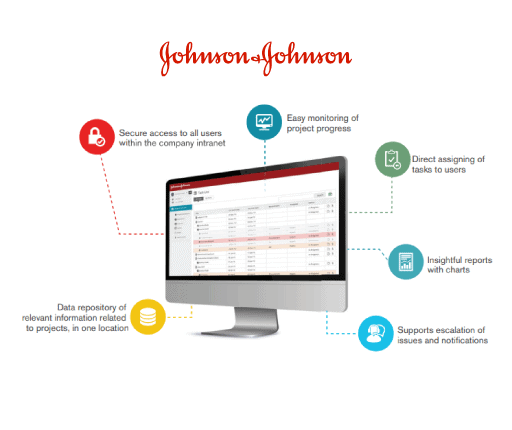Our Services
Fingent's Web Application Development Services
Secure, scalable, and intuitive custom web application development services for all types of business’s that enhance operational efficiency, boost business revenue, and delights customer experience
- Custom Web Application Development
- Web Application Modernization
- Web Design Services
- Web Application Support and Maintenance
The scope
Web Application Development
Web development involves the creation and upkeep of software applications that are designed to run on web-based platforms, with the aim of providing users with a seamless and engaging experience. These applications can be hosted either on the internet or an intranet, depending on the needs of the project. The end goal of web development is to create applications that are functional, dynamic, and tailored to meet the specific needs of businesses and organizations.
- Improved online presence
- Increased accessibility
- Improved customer engagement
- Streamlined operations
- Data analytics and insights
- Generate new revenue streams
Are You Looking For Experts To Build A Web Application?
Demystifying the two
Web Development vs Web Application Development
Web Development
- Focuses on creating and maintaining websites
- Involves using web technologies such as HTML, CSS, JavaScript, etc.
- Focuses on creating visually appealing and user-friendly websites
- Involves creating interactive web applications
- Performs complex tasks and processes
- May include features such as user login, database management, content management, e-commerce functionalities, etc.
Making the right choice
Types Of Web Applications
Static Web Application
These web applications consist of static web pages that display the same content to every user. They are easy to develop and maintain but are limited in functionality.
Dynamic Web Application
These web applications are more complex and interactive than static web applications. They use server-side scripting languages to generate dynamic content in response to user input.
E-commerce
These web applications are designed for online shopping and typically include features such as shopping carts, payment gateways, and order tracking.
Portal Web App
A portal web application is a website that provides information from different sources in a unified way. These websites are suitable for businesses that require a centralized platform to provide information to their employees or customers.
Content Management System (CMS)
Content management applications allow users to create, manage, and publish digital content, such as website pages, blog posts, and images, without requiring technical knowledge or coding skills.
Choose your approach
Navigating the Landscape of Web Development
It focuses on creating the user-facing side of the website. This involves designing the user interface, layouts, and using programming languages such as HTML, CSS, and JavaScript to build the website’s visual components.
This involves developing the server-side of the website, which includes the database, the application, and the server. Back-end developers use programming languages such as Java, Python, and Ruby to build the back-end of the website.
It combines both the front-end and back-end development of the website, managing end-to-end aspects of web development.
It involves developing web-based applications that are optimized for mobile devices.
It involves developing web-based applications such as online stores, shopping carts, and payment gateways, that allow businesses to sell their products or services online.
Want To Outsource Your Web Development?
Tailored solutions for unique business needs
Custom Web Application Development Services
Customized to your business needs : Web development services offer a high degree of customizability, which means that your website can be tailored to meet your unique needs and stand out from your competitors.
Scale as business expands : Websites can easily scale as your business grows, making it easy to add new products or services, update content, or expand the website’s functionality as needed.
Data security : Web development services can help to ensure that your website is secure by implementing the latest security protocols and best practices.
Easy maintenance : Web development services can provide ongoing maintenance and support to ensure that your website is always running smoothly and efficiently, without any hiccups.
The latest trends
AI-Powered Web Application Development Services
AI-powered chatbots can be integrated into websites to provide instant customer support and improve the user experience. Chatbots can help customers find the information they need, answer frequently asked questions, and resolve issues in real-time.
AI can analyze user data and predict behavior, allowing businesses to tailor their website experience to each individual user. This can include personalized recommendations, targeted advertising, and custom content.
AI can be used to improve website security by detecting and responding to threats in real-time. AI-powered tools can also be used to identify vulnerabilities and prevent cyberattacks.
AI can be used to generate content for websites, including product descriptions, blog posts, and social media updates. This can save time and effort for content creators and improve the quality and relevance of the content.
AI can automate repetitive tasks such as data entry, content creation, and testing, freeing up web developers to focus on more complex tasks. This can significantly reduce development time and cost.
AI can be used to enhance the user experience with augmented reality features, such as virtual try-ons, product visualizations, and interactive 3D models.
AI-powered image recognition tools can be used to automatically tag and categorize images on a website, making them easier to search and navigate.
With the increasing use of voice assistants, AI can be used to optimize websites for voice search, including natural language processing and voice recognition technologies.
How companies have leveraged web applications
The Business Advantage
Johnson & Johnson, one of the largest corporations in the US, optimized their existing system with a customized web application that improved team communication, identified project requirements, and quickly resolved any issues that arose.
Outcomes:
- 55% gain in overall productivity
- Slashed half of the technology expenses
- Real-time intelligence for better decision-making
- Streamlined management of projects and tasks

How to accurately estimate your budget?
Web Development Cost
The cost of web development can vary depending on the –
- complexity of the project,
- the required features and functionalities,
- the development platform used,
- the location of the development team, and
- the level of expertise of the developers
In general, basic websites with limited features can cost anywhere from a few hundred dollars to a few thousand dollars, while more complex websites and web applications can cost tens or hundreds of thousands of dollars or more.
Have A Requirement To Discuss?
Fingent’s approach
Web Application Development Process
web application development is a complex process that involves several steps to create a website or web application. According to Fingent, following a structured approach ensures that the project meets the requirements and specifications, and is delivered on time within the specified budget.
- Consult with experts and get a bigger picture of the underlying business ecosystem.
- Identify goals, objectives, and requirements of the website or application.
- Create the layout, color scheme, graphics, and user interface.
- Code the website or application using programming languages such as HTML, CSS, JavaScript, and PHP.
- Ensure functionality, usability, and performance of the website and make the website or application available to users.
- Ongoing updates and support to ensure it meets user needs.

Free consultations

Ideation

Strategy

Design

Development

Testing

Maintenance
Insights
More Insights on Enterprise Software Development

Top Technologies Used to Develop Mobile Apps
Business mobile applications are a must-have for reaching diverse audiences and making immense fortune in today’s digital-savvy market. Enterprise mobile apps help you achieve more than what you could with a run-of-the-mill website or a legacy desktop software.
Types of Application Software: Guide
Application software has become our everyday companions, knowingly or unknowingly. Today, various application software types are available to suit every need and purpose. Picking the right application software for your personal use or business can significantly impact you.FAQ
Frequently Asked Questions
The top platforms used for web application development include AngularJS, ASP.NET, Ruby on Rails, Symfony, Laravel, Node.js, React.js, Ember.js, CakePHP, Phalcon, Zend, Express, Codeigniter, JSP, MEAN.io, and Knack. With these platforms of support, developers can accelerate the development and maintenance of web apps, and deliver an optimal experience across devices.
Client Side Scripting Technologies : HTML, CSS, JavaScript, Ajax, jQuery, MooTools, Dojo, Toolkit
Server Side Scripting Technologies : PHP, Zend Framework, ASP, ASP.NET, ColdFusion, Ruby on Rails, Perl, Python
Web Development Frameworks : Ruby on Rails, Angular, Yii, Meteor JS, Express.js, Zend, Django, Laravel, Node.js, Ionic, Phonegap/Cordova, Bootstrap, Foundation, WordPress, Drupal, .NET, Backbone.js
Libraries : jQuery, Underscore
Databases : MongoDB, Redis, PostgreSQL, MySQL, Oracle, SQL Server
Protocols : HTTP, DDP, REST
Data Formats : JSON, XML, CSV
A web application is a client–server computer program that runs on a remote server and can be accessed using any browser. They use server-side scripts to manage storage and client-side scripts to display data to users.
Common examples of web applications include webmail, online banking, online forms, video and photo editing, file conversion, file scanning, online shopping, online auctions, spreadsheets, and more.
Web applications are popular because they do not demand complex installations, require very less computing power, can be easily subjected to changes, and solve some of the compatibility issues.
Modern Web Applications (MWA) is a combination of a set of tools and ways of thinking that result in flexible, modular, and lightweight apps.They are expected to be available round-the-clock, across the world. They should also be compatible across all devices and screen sizes.
Users expect these applications to be secure, flexible, scalable, and capable of handling spikes in demand without compromising on user experience. An example of the same is Progressive Web Apps (PWA) that lets users download mobile versions of websites on their phones to browse offline.
The time taken to build a web application can vary from hours to months depending on the scope of the project, user flows, and designs. The development entails various steps, starting from getting a clear understanding of the requirements to deployment and scaling, and the time taken for each step can vary significantly based on the complexity of the app.




 US
US Insurance
Insurance









































